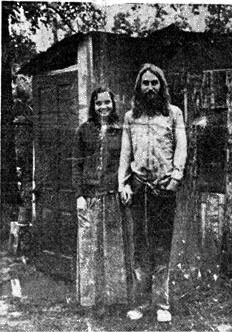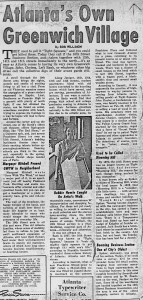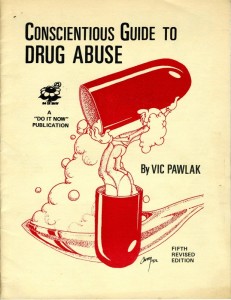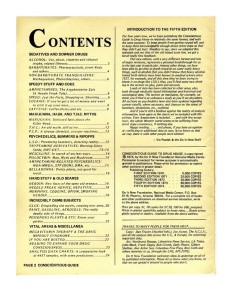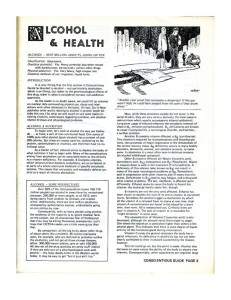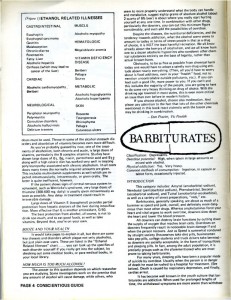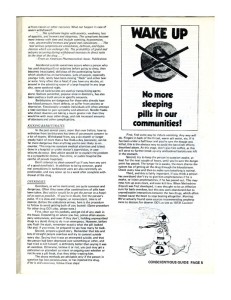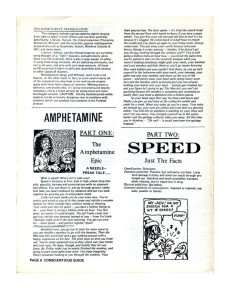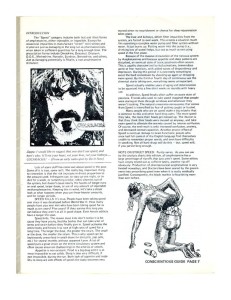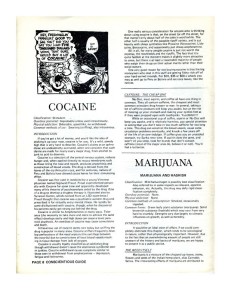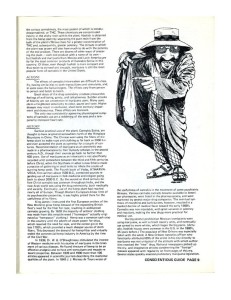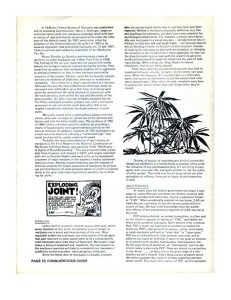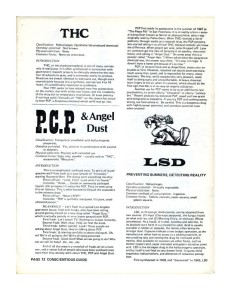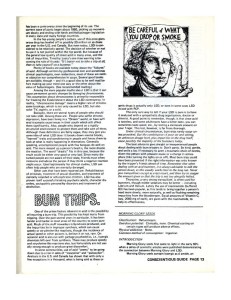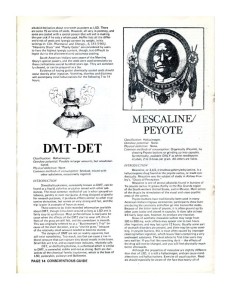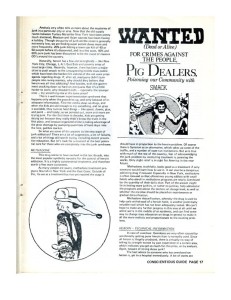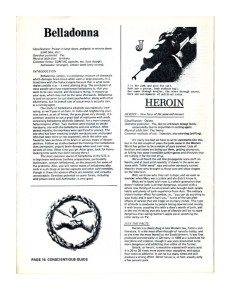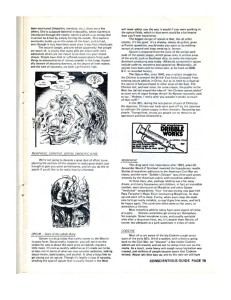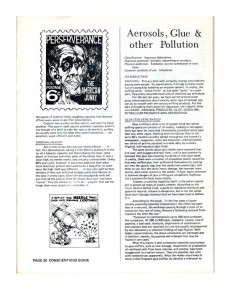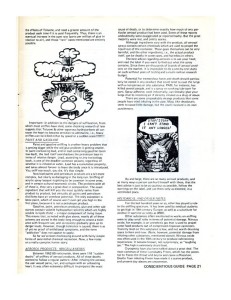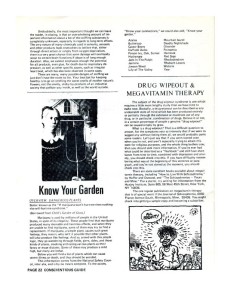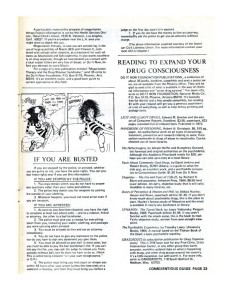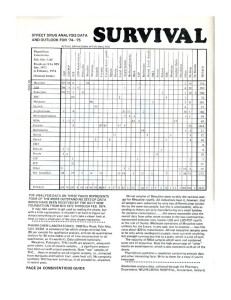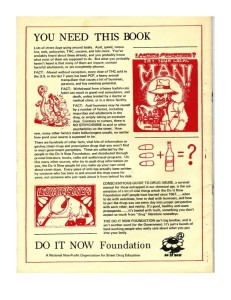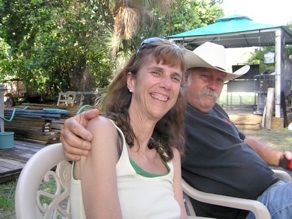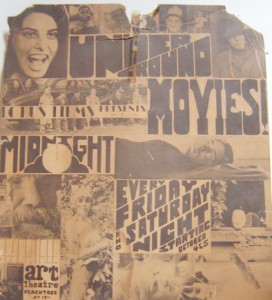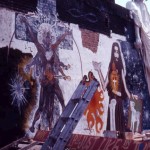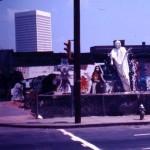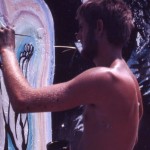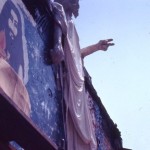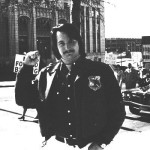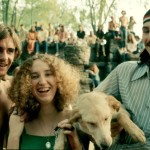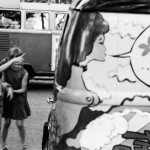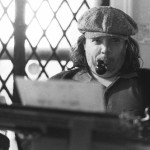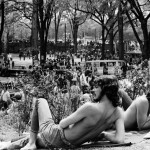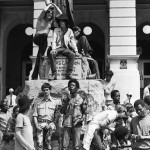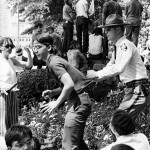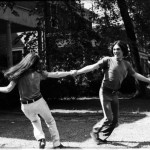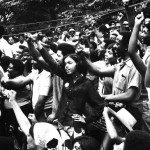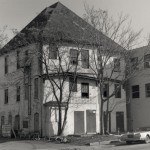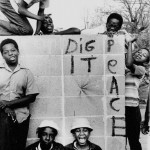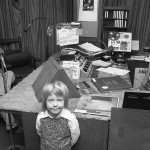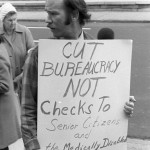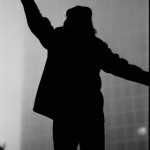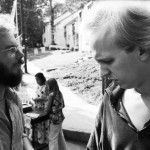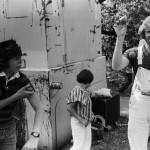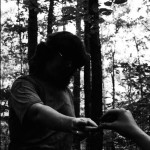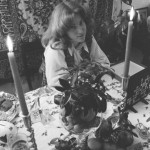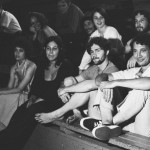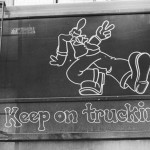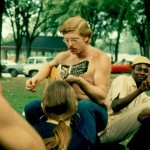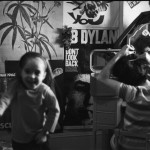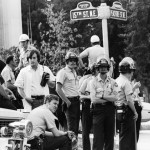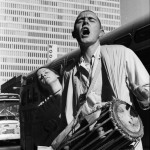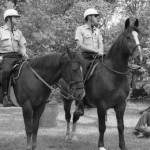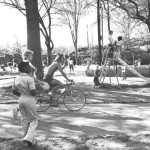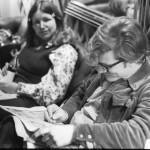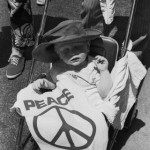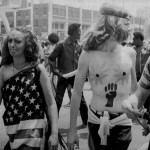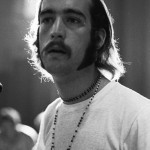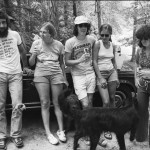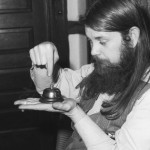A Story from the Strip
We thought we were such hippies on the Strip
even though we knew the real hippies were on Haight Street,
still we prided ourselves on at least being freaks,
because why else would the Sandy Springs and Cobb gawkers
keep cruising on weekend nights, whole families,
wide-eyed, pointing from station wagons,
before, later, came worse-off cars, the ones full of drunks
hollering, “Hey . . . Commie! You a boy or a girl?”
(look out for that beer can!)
But same as we realized we had a ways to go
to become visionary Bay Area digger-hippies.
we knew for sure we were in no way communists
because for one thing communists don’t take acid,
and it was acid that kept us freaky, or rather,
acid was what kept making normal people look grotesque.
Which is the way we liked it, having straights look scary,
so we tripped, we hung out, we got high . . .
we talked in fake Southern accents . . . then we crashed,
woke up groggy and started it all again . . .
we walked these same city blocks when
our cat-box stinky rooms became suffocating,
when the need for milk or bread or rolling papers
propelled us out onto the Strip
where we presented ourselves for ridicule
and sometimes violence, not to mention occasional
arrests for “violation of pedestrian duties,”
where we would sit in jail same as we did
for any political arrest because no Decatur St. bondsmen
except Alley Pat Patrick would ever go our bail.
For spiritual guidance we had two choices –
Mother David of the Catacombs with his
pagan, maternalistic embrace of all hippie waifs,
Mother David, queer of course,
but in our pre-gaydar lives he was simply loveable.
Mother David, matriarch of the hard-core 14th street scene,
while, over on 10th St. was Bruce Donnelley
with his suburb-friendly 12th Gate coffee house,
paisley evangelicals offering tea, cider,
the blues, an upstairs poster shop, and okay, okay,
a place to hit on hot weekend hippies-chicks
who might possibly want to see your black-light poster
in your 3rd-floor apartment across the hallway
from the elderly sisters who had lived there forever.
And somewhere between the Catacombs and the 12th Gate
was Henry and Sue Bass’s Workshop in Non-Violence,
middle ground, the politics of peace trying hard
to sprout in a great confused country torn by war.
.
We lived at 174 13th Street, behind the Bird house,
A collective of street-theatre types, SCLC workers
and, of course, the freaks, rabble who lived to get high
and put our heads between Iron Butterfly speakers,
a house-full of politicos and lotus-eaters thrown together
united in this community where, in the Haight or Berkeley,
the two would have been separate, judgmental,
but here on the strip, in-fighting was a luxury we could not afford,
so confused acid-heads took turns cooking dinner
on our “kitchen nights” – spaghetti, salad and bread
at a big table, eating with those very people our fathers
had warned us against – the dreaded “outside agitators”,
horn-rimmed activists like Jim Gehres from Oberlin college
who came South to become Dr. King’s chauffer
because the great man resonated with Jim’s sobriety,
and sometimes we did Jim’s dish night
because he was driving Dr. King, and sure,
one night we gave Jim a too-strong hit of acid,
what rendered him unable to function for two days,
what produced an blue-overalled circle of SCLC faces
telling us we had become part of the “problem” not the “solution”.
We walked to the park Sunday afternoons
to hear those guys from Macon play on the stone steps,
all of us agreeing that the Purple Paisly Spaceship
would be a much better name that the Allman Brothers
a name that sounded too much like those kids
on Andy Williams, the Osmond brothers.
But most days we only came out at night,
unless there was a demonstration like the morning
we supported Tom Houck’s induction refusal
over on Ponce at the Ford factory Square,
30 of us with Rev Lowry getting our picture taken
By Atlanta cops as morning rush hour traffic
screamed obscenities until Houck emerged
a free man because he was too fat to go in the Army.
And on one particular night, after a hideous dose,
orange double domes cut with truck-stop speed,
our squad of messed-up wannabee beat-buddhists
wandered these early morning 1968 Atlanta streets
like sadhus, Indian holy men with no home,
only a vision, and yeah, we had a vision all right,
but mostly we wanted our vision gone!
Enough already with the oneness thing!
And as we wandered the side streets off the Strip,
all we saw was concrete and asphalt,
a paved-over planet, our human connection
to the Earth destroyed by layers of aggregate,
same as our old mental pathways were destroyed.
How could we possibly go back to regular life
saddled by this new unsupportable awareness
that humans were mere ants divorced from all dirt,
and when oh when would our egos ever return?
Could someone please answer us that?
And when we saw human life, a redneck drag queen
hailing a cab, she looked somehow normal to us,
even though her thick Appalachian twang
gave her roots away when she laughed,
“No siree, honey,” to our requests of,
‘Do you have any reds? Seconals? A Tuinal?
anything, please. Just help us make it stop.’
“Y’all are some fucked-up flower-children,” she said.
“Looks like y’all’s eyeballs are fixing to pop!”
And when the Blue and Grey cab stopped for her,
we all saw that the taxi was being driven
by a coyote in a sports shirt, so we started running,
first down Twelfth St. then into the park,
but it was way too scary in there,
far too full of cruising cop cars and sedans
bulging with suburban jocks looking to gay bash,
yet we so needed a neutral patch of dirt,
a place directly connected to the greater planet,
a place we could root our butts to
and perhaps allow some of this terrible energy
to go back to ground, so we kept walking,
the speed helping us now,
we walked deeper into the city night
even though it was nothing like the city it is today,
and finally, at the corner of Juniper and Third,
we found a patch of land with some bushes,
a small habitat that perhaps no one cared about,
because we knew that this was going to be
one of those trips you just had to ride out,
that initial exhilaration of Oneness
now a tooth-ache, a pain you wanted so much to be over,
please be over, please, I’ll never take acid again,
we all promised even though we knew we were all lying.
and as dawn began to slowly bring up
its stage lights we saw that the hard sapling we’d
grouped around in the bushes was actually
a State of Georgia historical marker,
a few of us now suddenly, miraculously able to read,
repeating the inscription to the others –
“James Andrews,” for it was on or near this spot
in June 1862, barely a 100 years ago,
he and five others were hung by the neck until dead –
Andrews Raiders . . . the Great Locomotive Chase . . .
then capture, the Congressional Medal of Honor
created by Abraham Lincoln for these men
who were marched here, on or near this spot
to breathe their last breaths likely to muffled
beats of drums, and the scaffolding,
we all began to come down a bit figuring
out where it must have been – over there,
on that little rise going back up to the Fox,
its hinged trap door waiting to spring,
and that’s how we finally returned to our old souls,
guessing about that trap door of death,
where exactly had it been,
somewhere in the air, perhaps out in traffic,
and when it sprang open, what was the sound like,
the squeak of hinges yes,
a gasp from the crowd, for sure,
and above it all the sounds of strangulations,
last bursts of life caught, never to be released.
Rupert Fike’s poems and short fiction have appeared in Rosebud (Pushcart nominee), The Georgetown Review, Snake Nation Review (winner 2006 single poem competition), The Atlanta Review (forthcoming), Natural Bridge, FutureCycle, Borderlands, storySouth, The Cumberland Poetry Review, and others. A poem of his has been inscribed in a downtown Atlanta plaza, and his non-fiction work, Voices From The Farm, accounts of life on a spiritual community in the 1970s, is now available in paperback.
